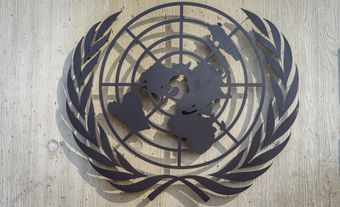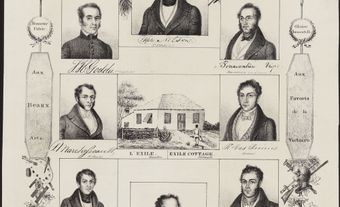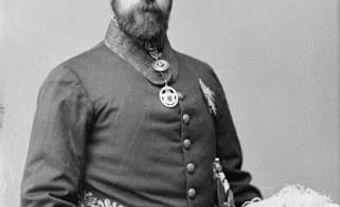This article was originally published in Maclean's Magazine on March 23, 1998

Power Deal
After meeting last week with Quebec Premier Lucien Bouchard in Labrador to announce a deal that could create one of the largest hydroelectric projects in the world, Newfoundland Premier Brian Tobin was back in St. John's doing what he does best: spinning and selling. A televised address to the province, a two-hour stint on an open-line radio program and a rousing, unscripted speech to the St. John's Board of Trade all formed part of the promotional pageant. To all who would listen, the premier's message was simple and upbeat: the $11.8-billion project on the Churchill River promised to pour a torrent of dollars into Newfoundland coffers, redressing the inequities of a 1969 pact with Quebec over a hydro development on the same watercourse. And as if that were not enough, Tobin claimed the deal also struck a point for national unity. Recalling how discussions with Quebec's separatist premier began during a First Ministers' trade mission to Asia 14 months ago, Tobin told Maclean's: "After 30 years of bitter history, two provinces found common cause on a Team Canada mission. Frankly, I love the symbolism."Tobin's chipper words aside, there remain daunting hurdles to overcome if the premier's power play is to become a reality by 2007, the target completion date. The Innu, who have occupied the area around Churchill Falls for centuries, vowed last week to use civil disobedience and the courts to block any further development. The federal cabinet, already under pressure from Newfoundland to provide millions more dollars to unemployed fishermen, cast a wary eye on Tobin's request that Ottawa fund an 800-megawatt, $2.2-billion undersea transmission line between Labrador and the island portion of Newfoundland. But even if Ottawa and the Innu are brought onside, the megaproject will fly or founder according to two very fickle masters: the financial markets, where capital for the development will be raised, and world energy prices, which will determine its ultimate profitability. And despite rosy assurances from project proponents, many independent analysts warn that troubles loom ahead. "It's a very risky deal," says Philippe Dunsky, director of Helios Centre, a Montreal-based energy think-tank. "The problem with megaprojects is that you have to base a major investment decision looking 10 years in advance."
There is nothing in what Tobin and Bouchard announced last week that is legally binding on either of their governments. But they did detail the objectives for a final agreement that could be signed by the end of this year. The major elements of the deal include a $3.2-billion dam on Gull Island Rapids on the Lower Churchill; $3 billion worth of new transmission lines in Labrador and Quebec; and a $1.3-billion expansion of the existing hydroelectric site on the Upper Churchill. Newfoundland and Labrador Hydro would own 65.8 per cent of the new developments, the other 34.2 per cent being held by Hydro Québec. And, in what Tobin characterized as a key concession, Hydro Québec will guarantee to buy the new Churchill Falls power at a still-to-be-negotiated minimum price; but the maximum price for the electricity will be set by the marketplace. As well, Hydro Québec will absorb the cost of constructing the new overland transmission lines.
One other crucial - but still tentative - part of the deal, is the proposal to place four submarine cables under the 20 km Strait of Belle Isle to finally connect the island portion of Newfoundland to the North American power grid. Due to the threat of scouring by icebergs, the technology involved is costly, and Newfoundland cannot afford to pay for it alone. Tobin is asking Ottawa for financial support - offering in return to help Canada live up to its commitments under the 1997 Kyoto Protocol on greenhouse gas emissions. The protocol commits Ottawa to reduce such emissions to 1990 levels by 2010, and Tobin argues the low-polluting Labrador hydro energy would do just that.
A senior aide to federal Energy Minister Ralph Goodale conceded last week that Tobin - a former federal cabinet minister who knows his way around the nation's capital - was astute in making his pitch. But the federal Liberals are clearly leery of revisiting the era of massive, tax-supported energy developments. "We are not," said the aide, "in the business of funding megaprojects." So far, all Ottawa has agreed to is a feasibility study of the link.
Lurking behind the scenes last week, like the ghost of Hamlet's father, was the infamous 1969 pact reached between former Newfoundland premier Joey Smallwood and his Quebec counterpart, Jean-Jacques Bertrand. At the time, Quebec refused to provide a right-of-way to allow Labrador power to reach markets in New England. That set the stage for a spectacularly one-sided deal, in force until 2041, under which Newfoundland must sell Churchill Falls power to Hydro Québec at a predetermined low price, while Quebec is free to resell the power to American buyers for whatever the market will bear. The ink had barely dried on the deal when the Middle East energy crisis and galloping inflation caused prices to soar. The result, according to Newfoundland government estimates, was a $14-billion windfall for Quebec between 1976 and 1995, while Newfoundland made do with $2 billion in net profit.
Successive Newfoundland premiers demanded Quebec reopen the Churchill pact, but to no avail. Two Supreme Court challenges by Newfoundland were rebuffed, with the province being told, in essence, that a contract is a contract. Bouchard said much the same thing when Tobin first took up the cause in a series of cross-Canada speeches in the fall of 1996. In those addresses, Tobin urged Quebec to renegotiate the pact out of a sense of common decency. He also hinted darkly that he was prepared to shut off the power if the Quebec government refused to bend.
Following Tobin's tub-thumping, some Quebec businessmen, including Jacques Lamarre, president of the influential engineering firm SNC-Lavalin Group Inc., began to urge the two provinces to settle their differences and pursue mutually beneficial developments on the Lower Churchill. During private talks on a Team Canada trade mission to South Korea, the Philippines and Thailand in January, 1997, Bouchard and Tobin began to do just that. As Tobin tells it, the two leaders started "talking to each other rather than at each other." More than a year later, the deal that emerged leaves the original Churchill contract largely intact. But it gives Newfoundland far more generous terms on the second phase of development.
In fact, as he made the media rounds last week, Tobin could barely disguise his glee. At a meeting with the editorial board of the St. John's Evening Telegram, he boasted that "this is the Upper Churchill deal in reverse." He quickly added that both sides have much to gain from a deal. That was more in keeping with the official pronouncements by Hydro Québec. The giant utility maintains that, because of low generating costs at the new Churchill site, it will be able to deliver power to the United States at 4.2 cents per kilowatt hour - well below the 5.7 cents that Hydro Québec chairman André Caillé says is the cheapest price in the offing from U.S. producers. "We're basing this strictly on a price approach," said Guy Versailles, a Hydro Québec official, "and we know that if our price is right, the market will pay it." However, energy analyst Dunsky remains dubious. Taking into consideration current market prices, Dunsky believes Hydro Québec's price forecasts are too optimistic. And while interest rates are currently low, financial conditions could easily change over the nine years of planned construction.
A more immediate challenge for both the Quebec and Newfoundland governments is the opposition of the Innu. Daniel Ashini, vice-president of Labrador's Innu Nation, says his people will not allow the new Churchill project to proceed until they receive an apology and compensation for the massive flooding that damaged their lands as a result of the original development 30 years ago. Their land claim, under negotiation since 1991, must also be settled. The Innu are already recruiting support from international environmental groups, and say that they will not hesitate to practise civil disobedience - both tactics that worked effectively for the James Bay Cree in killing the Great Whale hydro project in northern Quebec in the early 1990s. Until their demands are met, says Ashini, "We will do everything in our power to ensure that the Lower Churchill does not proceed. There's just too much at stake."
Bouchard and Tobin got a foretaste of what might lie ahead when 150 Innu protesters thwarted the premiers' plans to televise last week's announcement live across the nation. The natives blocked the road into Churchill Falls and occupied the building where TV cameras had been set up for the anticipated news conference. Tobin and Bouchard were forced to abandon a van in which they were riding and walk through a crowd of shouting Innu, before another vehicle carried them to a helicopter that bore them into town to meet reporters at a backup location. As the host premier, Tobin said afterwards that he regretted the disruption. But, he added, "It's a free country." The other obstacles facing his megawatt ambitions for Labrador's wilderness will not be so easy to sidestep.
Maclean's March 23, 1998

 Share on Facebook
Share on Facebook Share on X
Share on X Share by Email
Share by Email Share on Google Classroom
Share on Google Classroom


